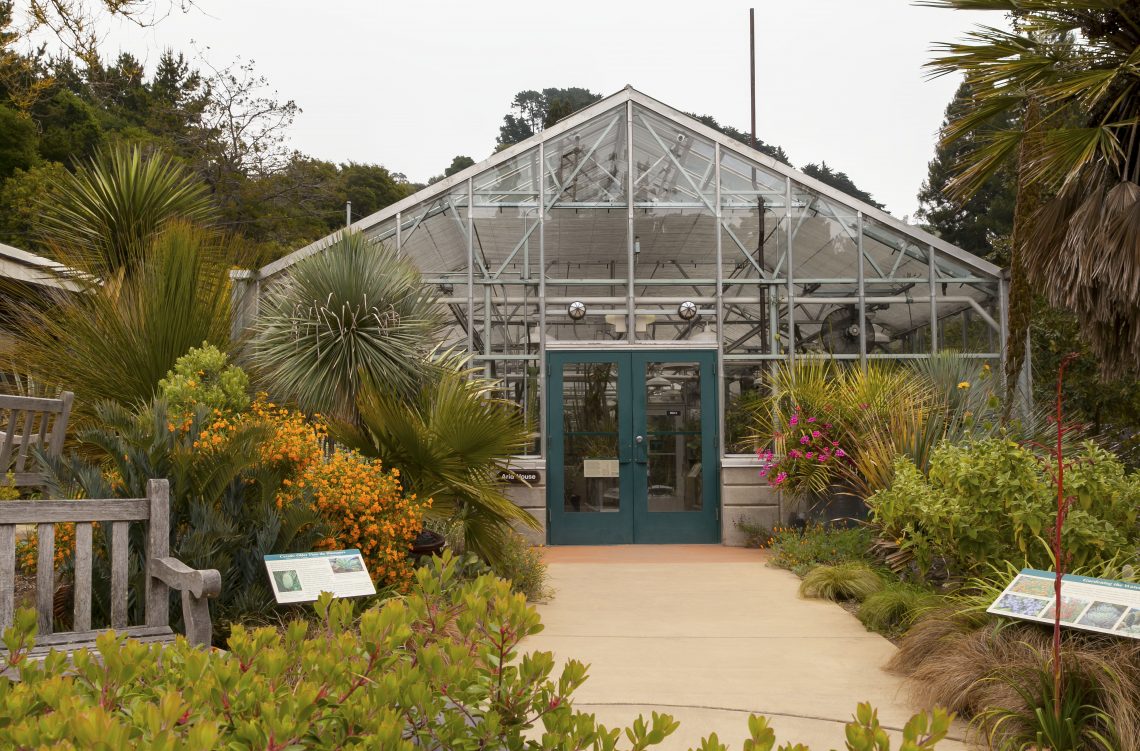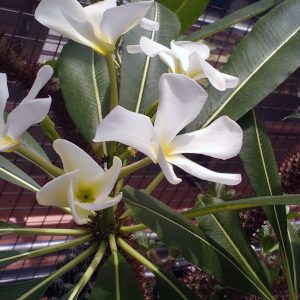
Bryan Gim, Horticulturist

Pachypodium
Working as a horticulturist in a glasshouse is an interesting job, particularly in a collection as diverse as that in the UCBG Arid House. The Arid House harbors a phenomenal collection of over 10,000 plants. The unifying theme of the collection is adaptation to habitats of extreme aridity and the plants display a fascinating range of specialized morphologies. We see water storage in leaves, stems and roots and development of photosynthetic stems. We also see defense mechanisms that protect the plants from moisture-craving predators: accumulations of toxins, development of spines and irritating trichomes (hairs) and mimicry. All of these adaptations lead to a very visually diverse collection of plants. It certainly appeals to the inner sculptor in me.
But one of my surreptitious pleasures of this collection are the flowers… yes, flowers. While there are some plants like Adenium that are known for their flamboyant blooms, there are a variety of more subtle, smaller flowers which I find delightful.
The aforementioned Adenium (desert rose) and its sister genus Pachypodium are succulent trees from Africa and Madagascar with magnificent blooms that many Arid House visitors ooh and ah over. Dorstenia gigas, endemic to Socotra is in the fig family (Moraceae). Its odd flower looks cartoonish but one can see the family resemblance when compared to the fruit of an edible fig.

Euphorbia milii cultivar
The chartreuse flower of the Escontria chiotilla cactus is so easy to overlook because it blends in against its own green stems but the combination of flower color and shape is subtly spectacular. Our Euphorbia milii cultivar has gorgeous pastel bracts that surround the rather inconspicuous flower. These are almost an inch and a half in diameter, much larger than the true species.
My favorite flower comes from one of my favorite plants, Pseudolithos cubiformis. This succulent milkweed (Apocynaceae) is a rock mimic from Somalia where it is scarce. In addition to its odd, cubed shape and reptilian, tuberculate surface, this plant has alienesque, rayed flowers to entice its carnivorous fly pollinator. As a bonus, the flower gives off a scent of rotting carrion to make it more appealing!
So, while many Garden visitors flock to our Garden of Old Roses, a visit to the Arid House will reward you with its share of blooms. I can’t tell you what specifically is flowering, but with so many plants, there is always something in bloom. Just come visit and see for yourself.
